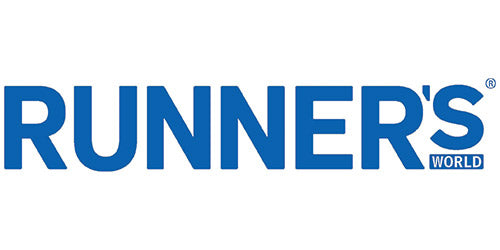Common Running Injuries, Prevention and Management
By Rebecca @ Up and Running
Injuries are common amongst runners and due to the repetitive loading and high impact to muscles and joints makes certain injuries more susceptible to runners. Injuries that I frequently encounter runners sustaining include the following:
ITBS
Iliotibial band syndrome (ITBS) is pain experienced on the outside of your knee caused by frictioning of the ITB near it’s attachment to the bone. This painful condition can stop runners in their tracks and experience severe, sharp pain when bending the knee. This is caused by too much tension being placed on the ITB often due to poor running biomechanics when the hip rotates in and the arch of the foot will drop causing the knee deviate inwards.
Immediate treatment includes rest from running, ice application to the painful site for 20 minutes and non-steroidal anti-inflammatory medicines. The long-term treatment often includes stretching the tight muscular structures and strengthening the core and gluteal muscles to ensure good lower limb alignment when running. In some cases new footwear or orthotics are advised.
Achilles Tendinopathy
The achilles is a strong fibrous tendon that connects the calf muscles to the heel. With repetitive running or an increase in training load micro tearing of the tendon can occur. If left untreated, overtime this could result in a rupture. Runners with this condition initially complain of pain in the tendon when running but this can evolve to continuous pain, especially worse first thing in the morning.
Early diagnosis is essential and treatment initially consists of resting from running, ice application and release of any tight muscular structures. Placement of heel wedges in the shoe can help to off load the tendon in the early stages and a loading exercise programme for the achilles starting with static holds progressing to heel drop exercises.
Plantar fasciitis
The pain experienced with plantar fasciitis is often described to me by patients as like ‘walking on glass’. The pain is located at the attachment of the fascia onto the heel and/or along the arch of your foot. Plantar fascia is a thick band of fibrous tissue that connects your heel bone to your toes and acts as a support for the arch of your foot and a shock absorber. When this thick band becomes over stretched due to too much pressure on your feet or an increase in loading activities it can become inflamed.
Plantar fasciitis is not always attributed to one specific event but can develop overtime with repetitive running. Immediate treatment consists of ice, a nice way is to roll a frozen water bottle under the arch of your foot, non-steroidal anti-inflammatory drugs and taping to off load the plantar fascia. Once diagnosis
has been made the Physiotherapist will instruct on exercises to stretch tight muscles and strengthen other areas of weakness to improve overall biomechanics.
Anterior knee pain
Anterior knee pain also referred to as patella femoral joint pain, is an umbrella term referring to pain experienced at the front of the knee. This could be the result of inflammation to the quadriceps or patella tendon which attach the large thigh muscles to the knee cap and shin.
Pain when running at the front of the knee may also be caused due to an imbalance of a tight iliotibial band at the outside of the knee and weakness of the inner quadriceps muscle causing what refer to as maltracking of the patella. Ice, anti-inflammatories and rest are the immediate treatment modalities for anterior knee pain to allow the acute inflammation and pain to settle. An assessment by a Physiotherapist will then be able to diagnose the exact cause of the pain and instruct on the correct treatment plan to ensure return to pain free running. Taping techniques which the physiotherapist can instruct you on may also be part of
the treatment plan.
Stress fractures
Running can result in forces applied to the bone and joints in excess of 6-8 times an athlete’s body weight. Over extended periods of time, and without proper recovery between workouts, these forces can result in stress fractures, most commonly in the pelvis, leg, and foot.
The precipitating factors of stress fractures are multiple but typically result from repetitive high impact activities, such as running, especially when there has been a sudden increase in intensity, duration, or frequency of workouts without proper recovery.
Training errors such as poor running mechanics, improper shoe selection, and muscular fatigue can also predispose a runner to fractures. Each of these factors can cause excessive mechanical forces to be concentrated at key locations in the lower extremities, thereby exceeding the stress-bearing capacity of the bone. Other factors can also predispose an athlete to stress fractures. Hormonal and nutritional imbalances are thought to be responsible for the high rate of these injuries found in female athletes.
Once diagnosed, the first step in treating stress fractures is to identify the cause. Hormonal imbalances and nutritional issues must be resolved. Training and equipment errors should also be addressed. Shoe selection, training conditions, workout intensity and volume should all be analyzed by an experienced trainer or coach! Most cases are directly related to overuse and poor recovery. In these cases, strict avoidance of impact activity, dialling back your workout schedule, and using non-impact cross-training exercises to maintain fitness is
usually successful in allowing the body to heal and recover.
Muscle strains
Calf strains are amongst the most common, but can also strain the large hamstring or quadricep muscles. Strains can occur with a sudden acceleration of speed or with repetitive striding over a long run. A muscle strain can occur anywhere within the muscle and is described as a sharp pain especially on movement.
Like with most acute injuries ice is the go to initial treatment strategy for the first 48 hours and rest to reduce any further injury such as a full rupture. With milder strains there may be no bruising or swelling, unlike moderate to
severe strains. In this case compression such as tubigrip and elevation is important to reduce the swelling. With muscle strains the tissues need to heal and so evidence now discourages the use of anti-inflammatory medicines as this reduces the inflammatory cells which are needed for acute tissue repair. Ice and paracetamol are recommended for pain relief following muscle strains
Diagnosis
With all the above described injuries it is Important to seek a medical professional to get an accurate diagnosis of the condition to ensure correct treatment plan and advice on returning to running.
Prevention
Most people have heard the term ‘prevention is easier then cure’ and this is true for many injuries, especially niggling injuries that won’t resolve over time. Below are my top tips for preventing common running complaints:
- Warm up and cool down – a warm up should involve dynamic stretches for example heel kicks, walking lunges and a light steady jog at the start. Following the run, spend the last 10 minutes at an easy pace to let the heart rate return to a resting beat and allow circulation of lactic acid. During the cool down is where it is essential to do static stretches, for example calf, hip and thigh stretches. With a static stretch you want to hold and maintain the position for a minimum of 30 seconds to allow the muscle fibres to stretch and elongate
- Stretch and foam roll – with running muscles will tighten and if we don’t stretch after and in between runs you will loose the flexibility of muscles witch will shorten over time and can lead to strains. The fascia is the fibrous structure that sits on top of the muscles. Foam rolling helps to keep the fascia gliding smoothly over the muscles
- Sport massages – the main benefit of massage for runners is that it improves the flexibility and tone of the muscles and reduces adhesions or minor scar tissue between muscles. Incorporating a regular deep tissue massage into your routine will have the added benefit of reducing tight spots; flush out toxic chemicals; keep muscle fibres smooth and loose; and continue running pain free.
- Massage helps optimise recovery. Scheduling a massage after your long runs in training or post-race (5k, 10k, half marathon, marathon) can reduce pain and the intensity of muscle soreness that follows, allowing you to recover faster. The other benefits include increase blood flow; improved recovery time; removal of waste products from the muscle (ie. Lactic acid) and increase mobility.
- Strength and conditioning – for efficient running you require strength of the muscles to ensure good form and alignment. As described many of the injuries are often accountable for poor biomechanics. It is essential for runners to maintain a strong core and gluteal muscles to allow good pelvic control and lower limb alignment.
- Run assessment – here at UPANDRUNING we offer run assessments which will look in detail at how you run and the footwear you run in. Changing your stride and shoe can make a great deal of difference to your overall mechanics and risk of injury.
- Correct nutrition – On a day to day basis ensure eating adequate protein to allow tissue repair and sufficient carbohydrates to fuel your runs. During your runs stay hydrated and longer runs for instant over 60 minutes take fast acting carbohydrates such as gels, banana’s or bars to keep your muscle glycogen levels topped up.
- Rest days – Proper recovery is essential to allow your tissues to repair after training sessions and reduce too much stress on the body. Always try and schedule at least one rest day into your training week, this could be a great opportunity for you to use this day for a yin or restorative yoga session or guided stretch class.























